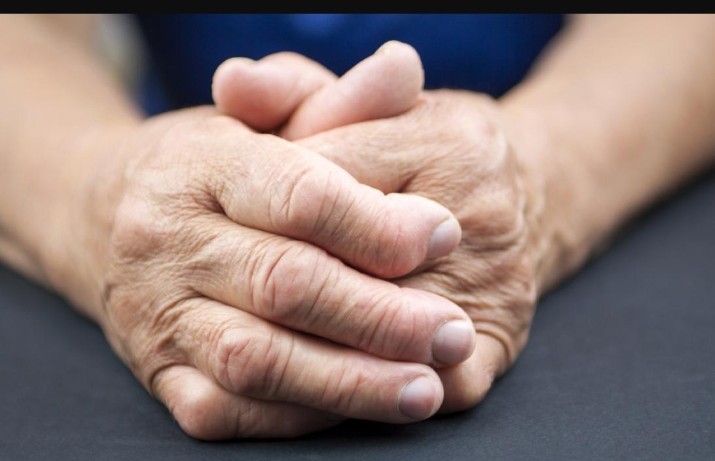
Affected wrist and finger joints
By Lana Burgess(MNT)
Early signs
What is rheumatoid arthritis?
Complications
Risk factors
When to see a doctor
Rheumatoid arthritis is a disorder where a person’s immune system attacks their joints, causing them to become inflamed. What are the early signs of this condition?
The symptoms of rheumatoid arthritis (RA) typically affect the hands, wrists, and feet. Spotting signs of RA early could lead to an early diagnosis and appropriate treatment.
Early and consistent management of arthritis can prevent joint damage and, ultimately, disability.
This article explores the early signs and symptoms of RA, its risk factors, and when to see a doctor.
Early signs
Rheumatoid arthritis is when the joints become inflammed because a person’s immune system is not functioning properly.
The main symptoms of RA are joint pain and stiffness. Before these symptoms occur, a person may experience some early warning signs.
Some of these early warning signs relate to how a person feels overall, while others are specific to the joints. The symptoms that affect a person’s joints are more likely to indicate RA, particularly if more than one joint or both sides of the body are affected.
Spotting these warning signs can help people seek treatment at the earliest possible opportunity. The early warning signs of RA include:
1. Fatigue
Before experiencing any other symptoms, a person with RA may feel extremely tired and lack energy. They may also feel depressed.
Feelings of fatigue may affect:
everyday activities
relationships
sex drive
productivity at work
Feeling fatigued may be due to the body’s reaction to inflammation in the joints.
2. Slight fever
Inflammation associated with RA may cause people to feel unwell and feverish. They may have a slightly raised temperature, which is an early sign that sometimes accompanies fatigue. It may precede any noticeable effects on the joints.
3. Weight loss
A third early warning sign of RA is unexplained weight loss, which is possibly an indirect effect of inflammation.
When someone is feeling feverish and fatigued, they may lose their appetite, which can cause them to lose weight.
4. Stiffness

Persistent stiffness, tenderness, and pain in joints may be an early sign of rheumatoid arthritis.
Another early sign of RA is joint stiffness. Stiffness may occur in one or two small joints, often in the fingers. It can come on slowly but may last for several days.
In addition to the stiffness that affects specific joints, a general feeling of stiffness in the body may be an early sign of RA.
This type of stiffness usually affects a person after they have been still for a long time. This symptom is the cause of morning stiffness, a characteristic complaint of patients with RA.
5. Joint tenderness
Joint tenderness that affects the hands and feet is a typical early sign of RA.
In the hands, the joint in the middle and at the base of the fingers may feel tender when pressed or during movement.
In the feet, the joints at the base of the toes may be tender. This soreness may cause people to walk on their heels or lift their toes up as they walk.
6. Joint pain
Joint pain in the fingers, wrists, and feet is a sign of RA. Inflammation makes the lining of the joint thicker and also causes the production of extra joint fluid.
Both of these factors put pressure on the capsule that surrounds the joint and irritate the nerve endings that it contains, causing pain.
7. Joint swelling
Joints that look swollen in the hands and feet is a typical sign of RA. Joint swelling tends to be more apparent as RA progresses, but subtle swelling may be an early sign.
8. Joint redness
Inflammation in the joints may give them a red appearance. Discoloration of the skin around the joints in the hands and feet is a sign of RA.
Redness occurs because the inflammation causes the blood vessels in the surrounding skin to widen. Wider vessels allow more blood to flow into this area, giving the skin a red appearance.
9. Joint warmth
Joint warmth is caused by inflammation and may be present before redness or swelling occurs. This can be an early sign of RA.
10. Numbness and tingling
Numbness and tingling affecting the hands and feet may be an early sign of RA. These symptoms are caused by inflammation in the joints that can cause nerve compression, resulting in loss of sensation.
11. Decrease in range of motion
In the early stages of RA, a person may notice they are having trouble bending their wrist back and forth.
As the disease progresses, damage to the joints can affect ligaments and tendons, making it hard to bend and straighten them.
12. Joints affected on both sides
It is common for people affected by RA to experience symptoms in the same joints on both sides of the body. While this symmetry is typical, it is not the case for everyone with the condition.
What is rheumatoid arthritis?
RA results from a problem with the immune system. When a person’s immune system is healthy, it helps to fight infection. In people with RA, the immune system mistakenly attacks the cells in the lining of their joint, resulting in inflammation of the joints, making them swollen, stiff, and painful.
People who have RA will have some periods where they experience no symptoms and other times when the symptoms flare up.
Currently, there is no cure for RA, but proper treatment and moderate exercise may help reduce flares. If RA is left untreated, the joints, cartilage, and bones in affected areas can become damaged.
Complications
It is important to tell a doctor or medical professional when RA symptoms change or get worse, as it may be a sign of complications developing.
If left untreated, RA can damage the joints, the surrounding cartilage, and the nearby bones, leading to joint deformities.
Untreated RA can also lead to firm lumps developing on or near the joints called rheumatoid nodules. These nodules are a visual characteristic that people often associate with the condition.
In addition to joint deformities and rheumatoid nodules, RA can also lead to:
carpal tunnel syndrome
inflammation in other areas of the body, including the eyes, heart, and lungs
greater risk of heart attack and stroke
Doctors do not know what triggers the immune system to attack the joints in the bodies of people with RA.
However, there are some factors that researchers know to increase the risk of being affected by the condition:
Sex: Women are at a greater risk of developing RA than men. A 2011 study found 1 in 12 women, and 1 in 20 men develop RA in their lifetimes.
Smoking: According to a 2009 study, there is strong evidence that smoking both increases the risk of developing RA and makes it progress more quickly.
Being overweight: A 2016 study found a link between obesity and a slightly increased risk of developing RA.
There are also some factors that researchers have found to decrease the risk of RA. These include:
Moderate alcohol consumption: A 2012 study found that moderate alcohol consumption was linked to a reduced risk of RA.
Breast-feeding: According to this 2014 study, women who breast-feed have a reduced risk of developing RA.
When to see a doctor
A person experiencing the early signs and symptoms of RA should go to see a doctor. A doctor can help to diagnose the condition and recommend appropriate treatment.
Early diagnosis and treatment of rheumatoid arthritis reduce the likelihood of experiencing complications from the condition.







